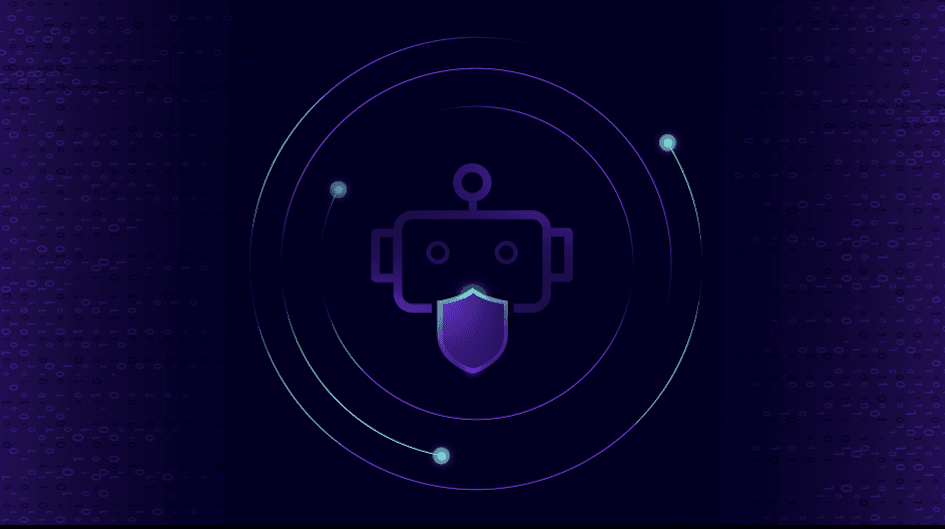Using AI to Build Apps & Automations: Top Cybersecurity Concerns

With the democratization of application development, users can now quickly create powerful applications without deep coding skills using AI copilots and low-code/no-code development tools. However, this ease of use can also introduce vulnerabilities, especially since many new developers aren’t well-versed in low-code application security best practices.
Organizations need to address these challenges by implementing a comprehensive security strategy to ensure that any application, automation, dataflow, or conversational bot built on popular low-code/no-code platforms adheres to organizational cybersecurity standards and policies. Here’s how:
Identifying and Mitigating Security Risks in Low-Code/No-Code Environments
Implementing application security controls like vulnerability scanning, secrets scanning, and data mapping helps mitigate common risks such as SQL injection, cross-site scripting, and improper data exposure. It’s crucial for organizations to enforce their security policies consistently across different platforms, whether that be Salesforce, ServiceNow, Microsoft, or others. Allowing administrators to define and implement custom security rules and policies ensures that every piece of software complies with various standards like GDPR and prevents configuration errors that could lead to data breaches.
With proactive monitoring tools, organizations can continuously scan for deviations from these centralized policies, alerting security teams about potential vulnerabilities or risks that need attention. It’s also important to recognize that security awareness and training are crucial for all users, not just the cybersecurity team.
Ensuring Data Privacy in AI-Driven Development Platforms
As more users adopt low-code and Generative AI capabilities to build new applications, the number of assets processing sensitive information skyrockets, increasing the need for security risk management. Implementing rigorous protocols to protect user data from unauthorized access or leakage is vital.
Privacy by design is a crucial aspect interwoven into the best low-code/no-code development platforms. From the earliest stages of application design, integrating privacy considerations helps ensure that personal data is handled in compliance with regional regulations like GDPR and CCPA.
Features like data anonymization and pseudonymization help reduce privacy risks, especially during the vulnerable phases of testing and deploying new applications. Another key factor is implementing controls to identify any applications and the people who have access to those applications that can access or process sensitive data.
Continuous monitoring and auditing of citizen developers is a must, especially as AI-driven apps and automations continue to grow in scope and depth and make it easier and faster for anyone to build these powerful apps.
The Risk of User-Based Controls
Proper authorization mechanisms are designed to provide fine-grained access control, ensuring that users only have access to the resources necessary for their role. This is possible through multi-factor authentication (MFA) and advanced role-based access control (RBAC) systems. These systems are backed by strict policies governing what actions users can or cannot perform within the platform.
Using RBAC limits the potential damage from insider threats or compromised accounts, and privilege escalation is stopped before it becomes a more widespread problem. However, these policies are rendered obsolete if applications are designed and embedded with the builder’s identity.
This easy (and common) misconfiguration makes it so that when an identity is embedded into an application, anyone in the organization (or externally) can use this app under the cloak of anonymity as they will appear to the security operations center (SOC) to be the maker.
Best Practices for Securely Deploying AI Applications
As AI becomes more commonplace within applications, workflows, and copilots, it’s necessary to have a comprehensive strategy encompassing all facets of data management, application security, and ongoing monitoring. Consider the following best practices to enhance the security and integrity of AI and low-code applications built on a variety of platforms.
Data Protection and Privacy
Begin by ensuring the security and privacy of the data used and accessed by AI applications. This involves encrypting data at rest and in transit, implementing strict access controls, and anonymizing personal data to comply with privacy regulations like GDPR or CCPA.
Shift Left
Integrate security practices to ensure that as apps are being built faster than ever, security can keep up. This includes alerting on apps that violate security practices, educating business users, and integrating vulnerability assessment tooling into these platforms to identify risks within a business context.
Robust Authentication and Authorization
Implement strong authentication mechanisms such as multi-factor authentication (MFA) to verify user identities securely. Additionally, use fine-grained role-based access controls (RBAC) to ensure that users and systems have access only to the resources necessary for their roles, and go a layer deeper by identifying violations in specific apps that have weak authentication protocols or are otherwise over-shared.
Adopt AI-Specific Security Measures
Citizen developer-led initiatives can be susceptible to unique threats like adversarial attacks and prompt injection, where manipulated inputs can lead to incorrect outputs. Implementing input validation, model hardening, and deploying adversarial training measures can help mitigate such risks and prevent data leakage.
Regular Security Audits and Updates
Conduct regular security audits to assess the security posture of applications that are built with, by, and containing AI. This includes reviewing security policies, practices, and compliance with applicable regulations. Keeping software and libraries updated with the latest security patches is vital to protecting against known vulnerabilities. This likely requires a detailed software bill of materials (SBOM) file for each individual app to establish an understanding of each component built into it.
Monitoring and Response
Deploy comprehensive monitoring solutions to detect and respond to threats in real time. Use logging and anomaly detection tools to monitor the behavior of AI applications and swiftly address potential security incidents. Establishing an incident response plan tailored to AI scenarios is essential for quick recovery and mitigation of damages. Adding governance and guardrails ensures that as people interact with and build AI applications, they align with corporate policies.
Ethical AI Use
Ensure that the deployment of AI applications adheres to ethical guidelines and principles. This involves transparency in how AI models make decisions, avoiding bias in AI outcomes, and ensuring that AI applications do not infringe on individual rights or freedoms.
By implementing strong authentication and authorization measures, regularly updating and auditing systems, and addressing the unique security challenges of AI, organizations can safeguard their AI-driven innovations. Adhering to these best practices enhances security and builds trust with users and stakeholders, ensuring that AI applications deliver their intended benefits while minimizing risks in an increasingly complex cyber landscape.
Read More:Empowering Governance in AI-Driven Citizen Development
Read More:Empowering Citizen Developers with Zenity’s AI Tools
Read More:Low Code Application Security Best Practices and Strategies
Related blog posts

The CISO Checklist for the New AI Agent Reality
AI agents are now acting across SaaS, cloud, and endpoint environments with identities and permissions that traditional...

Demystifying AI Agent Security
Let me be the first to say it, this space - AI agent security and governance - can be confusing. When I joined...

Zenity Joins the Microsoft Security Store: Securing AI Agents Everywhere, Together
We’re thrilled to share that Zenity is included in the unveiling of the Microsoft Security Store Partner Ecosystem....
Secure Your Agents
We’d love to chat with you about how your team can secure and govern AI Agents everywhere.
Get a Demo